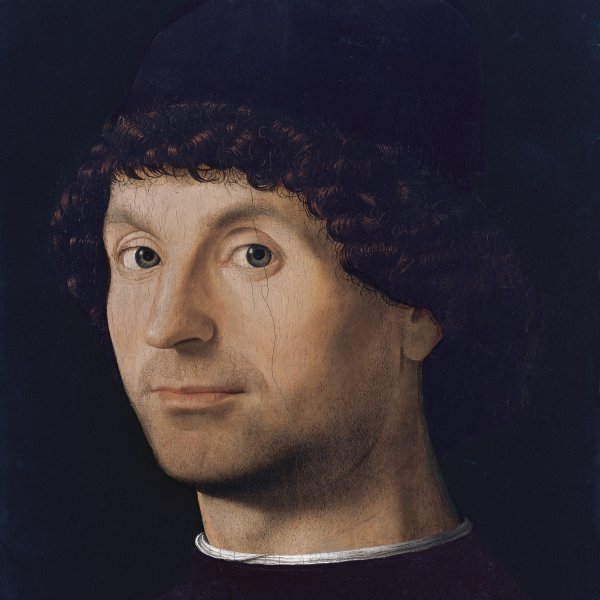Antonello da Messina
Considered one of the great figure of the Italian Renaissance, Antonello da Messina trained in the Neapolitan workshop of Niccolò Colantonio between 1443 and 1450, according to a document dated 1524. His knowledge of Flemish art, particularly the work of Van Eyck and Van der Weyden, was fundamental to the formation of his style. It is thought that the artist may have studied their works in the collection of Alfonso of Aragon.
Among Antonello’s first works is The Crucifixion in the Muzeul National de Arta al României in Bucharest, a work that reveals the stylistic influence of Colantonio, and Saint Jerome in his Study in the National Gallery, London. In 1457 he is documented in his studio in Messina where his son Jacobello and his two nephews also worked, although no signed work is known from this period. Coinciding with his mature period, Antonello’s first signed and dated work is a Salvator Mundi of 1464 (National Gallery, London). This is followed by the San Gregorio Polyptych of 1473 (Museo Regionale de Messina), and The Annunciation of 1474 (Museo Nazionale, Siracusa). The latter reveals the influence of Flemish painters as well as that of Piero della Francesca, Francesco Laurana and Giovanni Bellini in a way characteristic of Antonello’s late work. Between 1475 and 1476 Antonello da Messina is documented in Venice, where he executed the San Cassiano Altarpiece (now dismembered), of which the central part with a Virgin and Child is in the Kunsthistorisches Museum, Vienna. Dating from his Venetian period are two of the artist’s masterpieces: Saint Sebastian in the Gemäldegalerie, Dresden, and The dead Christ supported by an Angel in the Museo del Prado, Madrid. The time that Antonello spent in Venice has been considered of great art historical importance due to the influence of his style on portraiture. Within this area of his work important portraits are the Condottiere of 1475 (Musée du Louvre, Paris) and the head in Turin. Antonello da Messina was a groundbreaking artist, particularly with regard to technique, and is considered to have introduced the medium of oil into Italy. He died in February 1479 at the age of 49, according to Vasari.




